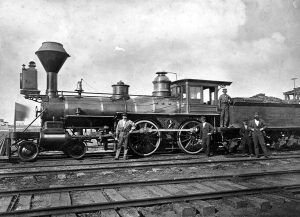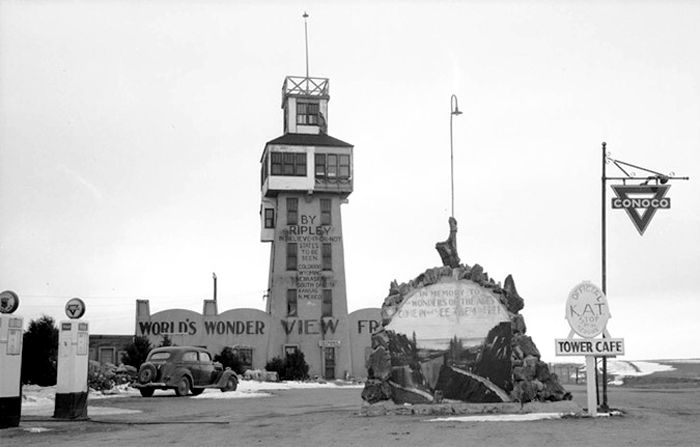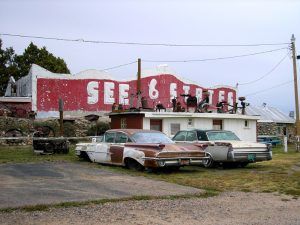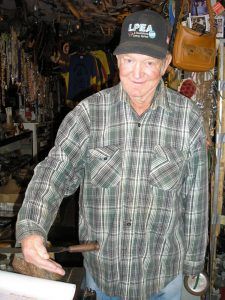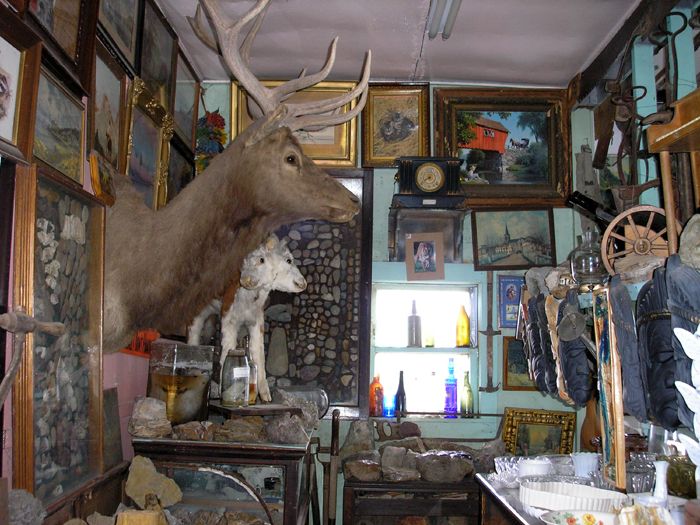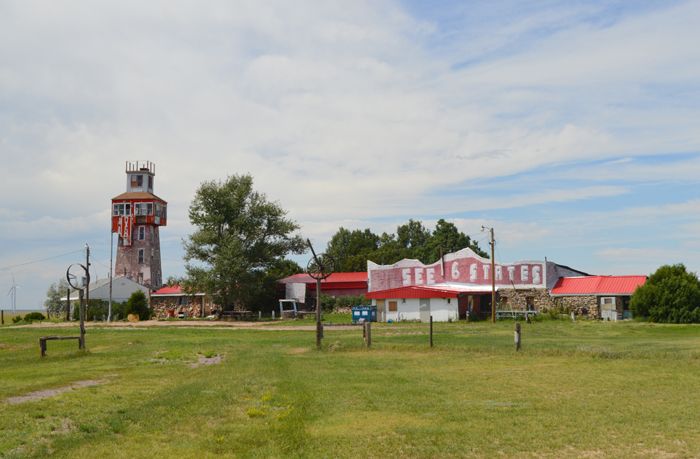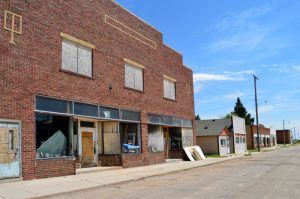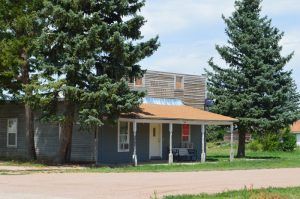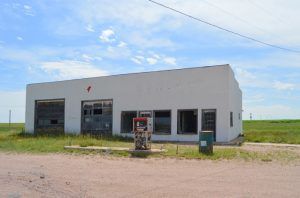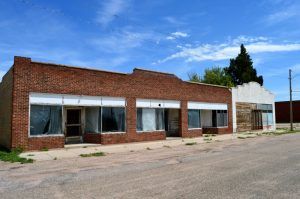Genoa, Colorado, a near ghost town in Lincoln County, has long been called home to a roadside attraction called the Genoa Wonder Tower.
The town, situated at an elevation of 5,741 feet, is the highest point between Denver and New York. Before white settlers began to come through the region, the area was home to various Plains tribes, including the Comanche, Kiowa, Arapaho, and Cheyenne.
In 1858, the Colorado Gold Rush brought thousands of travelers to Colorado in search of their fortunes. This enraged the area Indians, as it violated the 1851 Treaty of Fort Laramie, which granted them sovereignty across the plains. Along their travels, the new pioneers cut timber along the riverbanks, killed buffalo and other game, and trampled grazing grass with their wagon trains. Though the region’s warriors began to make raids and attacks upon the newcomers, they continued to flood the area.
As a result, the Treaty of Fort Wise was negotiated in 1861, which granted the Cheyenne and Arapaho a reservation in eastern Colorado that included parts of present-day Lincoln County.
White ranchers began grazing cattle and sheep in the 1860s, driving their herds to market in Denver or Colorado Springs. The Kansas Pacific Railroad came through in May 1870. At that time, the site of Genoa was only a boxcar depot located just east of the rise. The station was first called Creech, after a Rock Island executive, but was soon changed to Cable. Before long, new settlers came to the area and began to homestead. One of those who filed a claim was Karl and Augusta Martin in 1893. Over time, they would build a sod house, a granary, and other buildings on their farm. Family descendants continue to work the farm today, which still includes the original sod house and a large frame barn.
Soon a small community was established around the railroad depot. When the town folks heard that a railroad worker was hurt in an accident and was dying, they changed the town’s name to Genoa for the railroad worker’s hometown in Italy. By the turn of the century, county farmers were turning out bushels of corn, watermelons, potatoes, barley, and winter wheat, among other crops. A post office opened in Genoa in 1903, and the town grew to include a bank, newspaper, grocery stores, hotels, blacksmith, boarding houses, hardware, moving picture house, and gas stations.
Shortly after U.S. Highway 24 came through, the town got its most spectacular amenity — the Genoa Wonder Tower. Looking a little like an out-of-place lighthouse on the vast prairie, the 60-foot tower was built by Charles W. Gregory, a railroad engineer and entrepreneur, in 1926. The attraction initially included a motel, restaurant, and gas station. During this golden age of travel, these types of places were referred to as “one stops.” When the attraction first opened, Gregory, touted as Colorado’s P.T. Barnum of the time, would stand at the top of the tower, yelling through a megaphone at passing cars, enticing them to stop.
Over the years, Gregory added to his dream by covering the wood-frame additions with stone and converting the interior into imitation caverns. The site also became an official Greyhound bus station and a popular truck stop.
In 1932, the tower was recognized by Ripley’s Believe It or Not, claiming that visitors could see six states from the top of the tower. After this national recognition, the claim “See Six States” was soon painted on the tower itself and along many billboards along the highway. However, when Gregory died in 1946, the property fell into disrepair. It went through a series of owners who operated the tower complex as a traveler’s rest area and community gathering place. Along the line, the motel, station, and restaurant disappeared.
In 1967, a man named Jerry Chubbuck took over, and he and his family lived in an apartment at the base of the tower. When Highway 24 was replaced by Interstate 70 in the early 1970s, it almost proved a death knell for the attraction. However, Chubbuck added a room that served as an entry to an “oddity museum” filled with an extensive collection of Native American artifacts and animal monstrosities, including a two-headed calf and a skeleton of a wooly mammoth. The complex also included more than 20,000 Indian arrowheads, fossils, a wide array of bottles and insulators, farm implements, and other antiques. The World’s Wonder View Tower held so many wonders that it could carry on for several more decades. In 1995, the tower was added to the Colorado State Register of Historic Properties and was included in many guides as one of America’s most curious roadside attractions.
When Legends of America visited in 2006, we were thrilled with the museum’s oddities, and we climbed the steep stairs of the tower, where we could supposedly see Colorado, Kansas, Nebraska, Wyoming, New Mexico, and South Dakota. While this may have been a bit of an exaggeration, the tower provided a magnificent view of the high plains and the distant mountains.
In addition to the oddities, we also noted at the time we visited that the vintage roadside attraction was filled with cars parked outside the tower, and stated in our original article:
“Don’t be fooled by the cars parked outside the tower that are no more than rusting hulks — a ruse to make passing travelers think that crowds are flocking to the attraction. Another gimmick further perpetuates itself with dummies peeking from the windows in the tower above.”
However, it was an excellent stop for roadside attraction junkies like ourselves.
Unfortunately, Jerry Chubbuck died in 2013. His family decided to close the increasingly decrepit World’s Wonder View Tower, auctioned off most of the contents, and made plans to sell the buildings.
In July 2016, a consortium of longtime Colorado residents formed an organization to save the historic folk-art attraction and purchased the closed-up tower to preserve the structure as a Colorado landmark.
Today, the tower and its buildings still stand but are not open to visitors.
In the meantime, the population of the town of Genoa peaked in 1950 at 257. The area is called home today of about 130 people, and though the community still boasts a post office, during our last visit, it and the grain elevator appeared to be the only businesses open. The rest of the businesses appear to be long abandoned.
Genoa Wonder Tower is located at 30121 Frontage Road in Genoa, Colorado.
© Kathy Weiser-Alexander/Legends of America, updated June 2023.
Also See:
Ghost Towns & Mining Camps of Colorado
Sources:
Lincoln County, Colorado
See Lincoln County
Westword
World’s Wonder View Tower


